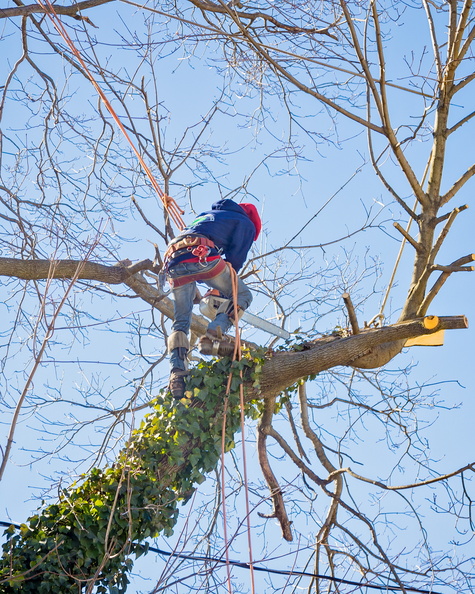The Essential Guide to Tree Trimming: Techniques, Timing, and Benefits

Tree trimming is more than just a task for maintaining aesthetics; it’s a crucial aspect of arboriculture that enhances tree health, ensures safety, and contributes to the overall beauty of a landscape. This article delves into the tree trimming process, the ideal times for trimming, and the multitude of benefits it offers.
Understanding the Tree Trimming Process
Tree trimming, often referred to as pruning, involves the selective removal of specific branches or stems to improve the tree's structure and health. This process requires careful planning and execution to avoid damaging the tree or its surroundings.
The first step in tree trimming is assessing the tree's health and structure. Arborists evaluate factors such as the tree's species, age, and condition. They identify dead, diseased, or damaged branches and decide on the trimming method that will benefit the tree most. After the assessment, a trimming plan is devised. This plan considers the tree's natural shape, the desired outcome, and the tools required. It also ensures the safety of the arborists and nearby property.
Various trimming techniques are employed depending on the tree's needs. Crown thinning involves removing select branches to reduce the tree's density, allowing more light and air to penetrate the canopy. Crown raising, which removes lower branches, elevates the tree's canopy, often to clear pathways or enhance visibility. Crown reduction reduces the height or spread of a tree by cutting back branches to a suitable growth point, typically when the tree has outgrown its space or poses a safety risk. Deadwooding focuses on removing dead or diseased branches to prevent decay and potential hazards, improving the tree's overall health and appearance.
The actual trimming is performed using tools like pruning shears, saws, and chainsaws. Skilled arborists make precise cuts to avoid harming the tree and ensure proper wound healing. This process might involve removing branches that cross or rub against each other, which can cause wounds and lead to disease. After trimming, the debris is cleared away, and the tree's wounds are checked. In some cases, wound dressings or sealants might be applied, although many modern arborists believe trees heal best without such treatments.
Optimal Timing for Tree Trimming
Timing is critical in tree trimming, as it affects the tree's health and growth. The best time to trim trees varies based on the tree species and the trimming objectives.
Most trees benefit from trimming during their dormant season, typically in late winter to early spring. During this period, trees are less likely to suffer from disease or pest infestations. Additionally, without leaves, it's easier to see the tree's structure and make precise cuts. For flowering trees, the timing of trimming depends on their blooming cycle. Trees that bloom in the spring should be trimmed right after their flowers fade to avoid cutting off buds that will bloom next season. Conversely, trees that flower in late summer or fall are best trimmed during their dormant period.
Trees posing immediate safety risks, such as those with broken or hanging branches, should be trimmed as soon as possible, regardless of the season. Emergency trimming ensures public safety and prevents damage to property. It's also crucial to avoid trimming during periods of stress, such as extreme heat, drought, or significant cold, as this can harm the tree.
Benefits of Tree Trimming
Tree trimming offers a range of benefits that extend beyond mere aesthetics, contributing to tree health, safety, and the overall environment.
One of the primary benefits of tree trimming is improved health. Regular trimming removes dead, diseased, or insect-infested branches, preventing the spread of decay and pests. It also promotes better air circulation and sunlight penetration, which are essential for photosynthesis and overall tree health. Proper trimming stimulates new growth by encouraging the development of healthy branches and shoots. By removing weak or competing branches, the tree can allocate more resources to its healthier parts.
Safety is another critical benefit. Overgrown or damaged branches pose significant hazards, especially during storms or high winds. Trimming reduces the risk of falling branches, which can cause injuries or damage property. Regular trimming helps maintain a tree's natural shape and structure. It prevents the tree from becoming overgrown or developing an unbalanced form, enhancing the visual appeal of landscapes and gardens.
Trees that are regularly trimmed tend to live longer. By removing parts that could cause damage or stress, the tree can grow stronger and more resilient, contributing to its long-term health. Trimming also allows more sunlight to reach the lower branches and the area beneath the tree. This improved light penetration supports the growth of grass and other plants beneath the tree and reduces the likelihood of fungal infections. Well-maintained trees add to the curb appeal of a property. Healthy, aesthetically pleasing trees can significantly boost the value of a home or commercial property, making tree trimming a wise investment.
Trimming can help manage pests by removing infested branches and improving the tree’s health, making it less susceptible to future infestations. This is particularly important for fruit-bearing trees, where pests can impact yield and quality. In conclusion, tree trimming is a vital practice for maintaining the health, safety, and beauty of trees. Whether it’s through the careful removal of dead branches, shaping the tree’s growth, or ensuring it remains a safe distance from structures, trimming contributes to a tree's longevity and the overall health of the ecosystem.
Proper timing and techniques are essential for successful tree trimming, making it a job best suited for trained professionals. Regular trimming not only enhances the tree’s appearance but also promotes its health and vigor, making it a valuable investment for any property.
Comments